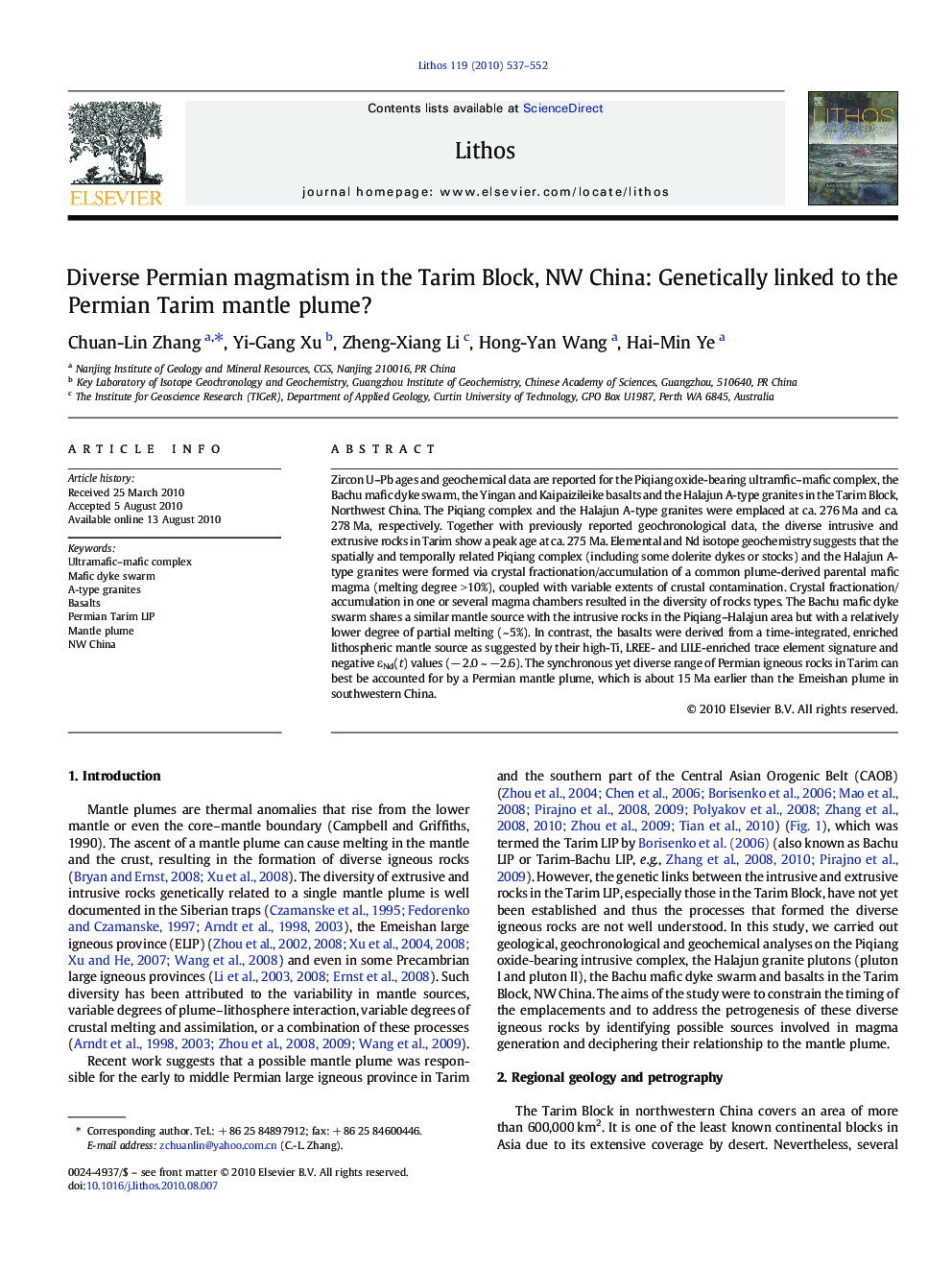| Article ID | Journal | Published Year | Pages | File Type |
|---|---|---|---|---|
| 4716891 | Lithos | 2010 | 16 Pages |
Zircon U–Pb ages and geochemical data are reported for the Piqiang oxide-bearing ultramfic–mafic complex, the Bachu mafic dyke swarm, the Yingan and Kaipaizileike basalts and the Halajun A-type granites in the Tarim Block, Northwest China. The Piqiang complex and the Halajun A-type granites were emplaced at ca. 276 Ma and ca. 278 Ma, respectively. Together with previously reported geochronological data, the diverse intrusive and extrusive rocks in Tarim show a peak age at ca. 275 Ma. Elemental and Nd isotope geochemistry suggests that the spatially and temporally related Piqiang complex (including some dolerite dykes or stocks) and the Halajun A-type granites were formed via crystal fractionation/accumulation of a common plume-derived parental mafic magma (melting degree > 10%), coupled with variable extents of crustal contamination. Crystal fractionation/accumulation in one or several magma chambers resulted in the diversity of rocks types. The Bachu mafic dyke swarm shares a similar mantle source with the intrusive rocks in the Piqiang–Halajun area but with a relatively lower degree of partial melting (~ 5%). In contrast, the basalts were derived from a time-integrated, enriched lithospheric mantle source as suggested by their high-Ti, LREE- and LILE-enriched trace element signature and negative εNd(t) values (− 2.0 ~ −2.6). The synchronous yet diverse range of Permian igneous rocks in Tarim can best be accounted for by a Permian mantle plume, which is about 15 Ma earlier than the Emeishan plume in southwestern China.
Research Highlights► The ultramafic-mafic complex in Tarim gave a zircon U–Pb age of 276 Ma. ► The A-type granites in Tarim gave a zircon U–Pb age of ca. 278 Ma. ► The diverse Permian intrusive rocks originated from the sub-lithospheric mantle. ► The basalts originated from a time-integrated, enriched lithospheric mantle source. ► Both the intrusive and extrusive rocks are genetically related to a Permian mantle plume.
